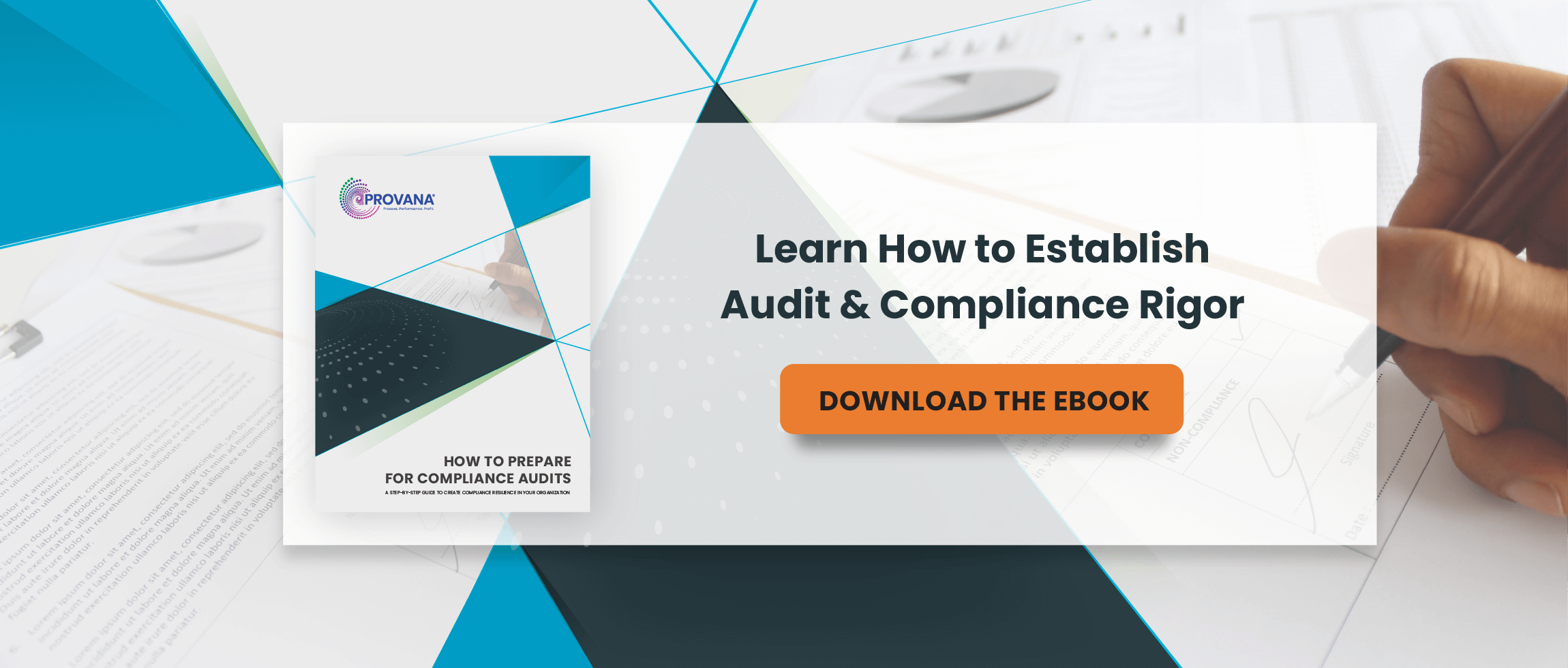5 Key Steps to Build Compliance Resilience Through Risk & Gap Analysis
- June 24, 2022
- Category: Compliance Management

Recommended Reading
The regulatory environment for collection players remains complex and ever-changing. Following such a complex web of federal laws (Reg F, laws around pending cases, CFPB trends, etc.) and state compliance (such as privacy laws, and mini-CFPBs) requires the right set of expertise, technology, and good knowledge of the entire process.
However, collection firms often fail to review company policies and procedures at a pace that correlates with changes in regulatory law, opening the organization up to unnecessary risk. As regulatory complexities and cyber-security concerns continue to increase, investing in a cutting-edge audit and compliance management solution can help you achieve operational resilience.
We’ve outlined five key steps to build a resilient compliance program in detail throughout the eBook linked here, but for a high-level recap, read on in the blog below.
1. Begin With A Risk Assessment
Without knowing the most relevant risks and potential negative consequences, it is difficult to determine whether compliance resources are being utilized properly – or even whether additional resources are needed to mitigate the most relevant risks. Thus, a risk and gap analysis is essential as the first step to proving the effectiveness and efficiency of your existing compliance program.
2. Gain Support For Your Risk & Compliance Strategy
Organizations should find ways to better manage compliance risks and think beyond the usual risk management. One behavioral step here is making sure your leadership is aware of compliance risks. To make every department in the company aware of the risk(s) and why they need to collaborate with the compliance department for compliance audit(s), compliance chiefs should keep their messaging about risk in sync with business imperatives. Front-line and mid-level supervisors from each department should play instrumental roles in carrying this C-suite messaging, actively turning corporate principles into day-to-day practice.
3. Conduct An Internal Compliance Audit
An internal compliance audit can check for the conformity of processes based on the CFPB’s compliance requirements. Internal audits, unlike external audits, may not be quite as stringent but can drive a culture of continuous compliance improvement in the organization. With a strong compliance culture, clear and defined compliance expectations (supplemented with regular compliance audits) can help agencies prevent and minimize risks, including threats to business reputation, data privacy infringement, lack of disaster preparedness, etc.
4. Prepare For Client Audits
Once upon a time, the need for a customer audit might have been seen as a tick box exercise, however, with the regulatory environment much tighter, compliance control has a much bigger role to play in any client’s vendor selection process.
Remember – the companies in the best position to manage client scrutiny are those that understand and follow applicable laws, have invested significant time and resources in building their compliance management programs, and can proactively identify issues and make corrections when needed.
5. Effectively Use The CFPB Preparedness Exam
It takes only one CFPB examination or investigation to uncover potential violations of law, allowing your agency to broadcast its regulatory expectations through public enforcement action. The key to successfully navigating a CFPB examination or investigation lies in careful preparation. Hence, collect and review available information from within the CFPB and other federal and state regulators. Review documents and information to keep your policies and procedures, training materials, and contracts aligned with CFPB norms ASAP.
Don’t know where to start?
Performing the above-mentioned steps requires paying attention to details and adopting a holistic approach to managing compliance in your agency. We recently created a comprehensive compliance guide that will help you embrace newer and better ways to mitigate the compliance risks. Download your copy for enhanced customer experiences, reduced compliance risk, and optimized operational costs.








